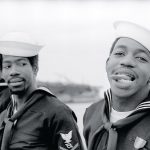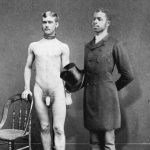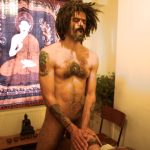The art of photography has long been a medium for capturing the beauty and diversity of the human form. While female nudity has historically dominated the visual arts, the history of male nude photography is a fascinating journey through changing societal norms, artistic expression, and the evolving perception of the male body. In this exploration, we delve into the rich history of male nude photography, tracing its development from early experiments to its current status as a celebrated form of artistic expression.
Early Pioneers and Taboos:
In the early days of photography, the portrayal of nudity was often constrained by societal taboos and conservative attitudes. However, pioneering photographers like Wilhelm von Gloeden and Wilhelm von Plüschow in the late 19th and early 20th centuries dared to challenge these conventions by capturing the male nude form. Despite facing censorship and legal challenges, their work laid the foundation for the exploration of male nudity as an artistic subject.
Body as Art: The Male Nude in Classical Photography:
As the 20th century unfolded, photographers began to embrace the male body as a subject of artistic exploration. Figures like George Platt Lynes and Horst P. Horst contributed to the emergence of the male nude as a legitimate form of art. Their work often drew inspiration from classical sculptures and paintings, presenting the male form as a symbol of strength, vulnerability, and aesthetic beauty.
The Male Nude in the Context of Homoeroticism:
With the cultural shifts of the mid-20th century, particularly during the sexual liberation movement, male nude photography began to intertwine with homoerotic themes. Photographers like Robert Mapplethorpe and Herb Ritts explored sensuality and desire, creating iconic images that challenged traditional notions of masculinity. These artists played a pivotal role in pushing the boundaries of artistic expression and paved the way for a more inclusive representation of the male body.
Contemporary Perspectives: Celebrating Diversity:
In the 21st century, male nude photography has evolved to encompass a broader spectrum of identities, orientations, and body types. Contemporary photographers such as Duane Michals, Collier Schorr, and Ryan McGinley have embraced diversity, capturing the male body in all its uniqueness and challenging societal norms around beauty standards
Male nude photography has not only served as a form of artistic expression but has also been a tool for activism. Photographers like Braden Summers have used their work to challenge stereotypes and promote inclusivity, celebrating the beauty of the male form. The history of male nude photography is a testament to the evolving relationship between art, society, and the human body. From the early challenges faced by pioneers to the contemporary celebration of diversity, the male nude has become an integral part of the visual arts, inviting viewers to appreciate the beauty, vulnerability, and complexity of the male form through the lens of artistic expression.














































